If you’ve ever lifted a tire, you may have noticed that tires are quite heavy. So, how much do tires weigh? This article has the answers.
A tire’s weight is dependent on its size and type. Smaller, passenger car tires weigh approximately 20 to 22 pounds while larger truck tires weigh around 30 to 80 pounds. However, the materials used, quality of the tire and application will also determine the weight.
In this article, we will take a closer look at the different factors that affect a tire’s weight. We will also walk you through the average weight of the different tires on the market. By the time you finish reading this article, you will have an answer as to how much tires weigh.
We are committed to publishing well-researched, informative, up-to-date and relevant articles. And this is made possible by our team of content creators, comprising certified tire specialists, seasoned researchers, and experienced journalists.
So, whenever you are reading a tire article or review on our site, you can rest assured the information is credible.
The average weight of a tire will depend on various factors. It will depend on the materials used, the type, quality and size, since different vehicles use different tire types and variations.
A standard tire features different components like the tire casing, the belt system, and the tread. While most of the materials used in these components are standard across the industry, there are some slight variations, depending on the type and application of the tire.
For example, an all-terrain tire or mud-terrain tire will come with chunkier tread blocks, compared with an all-season tire. Hence, while the two tires may be of the same size, the mud-terrain tire will be heavier than the all-season tire.
At the same time, a premium, high-quality tire may come with more rubber layers, compared to a budget tire. Similarly, you can expect the premium tire to weigh more than the budget tire, as much as they may be of the same size or type.
Similarly, you can expect the premium tire to weigh more than the budget tire, as much as they may be of the same size or type.
As noted above, a tire’s weight will also depend on the type. Let’s take a closer look at the different types of tires on the market as well as how much they weigh.
There are hundreds of different models of passenger cars on the market today. And these different cars come with varying wheel sizes. On average, wheel sizes in this category range between 13 inches and 20 inches.
And as mentioned above, one of the factors, size is one of the factors that determine a tire's weight. On average, most of the tires in this category weigh between 14 pounds to 22 pounds.
As you may expect, the smaller the tire, the smaller the weight and vice versa. For instance, a small city car will have a 13-inch tire, weighing approximately 14 pounds while a large sports car or an SUV will have a 20-inch tire, weighing around 22 pounds.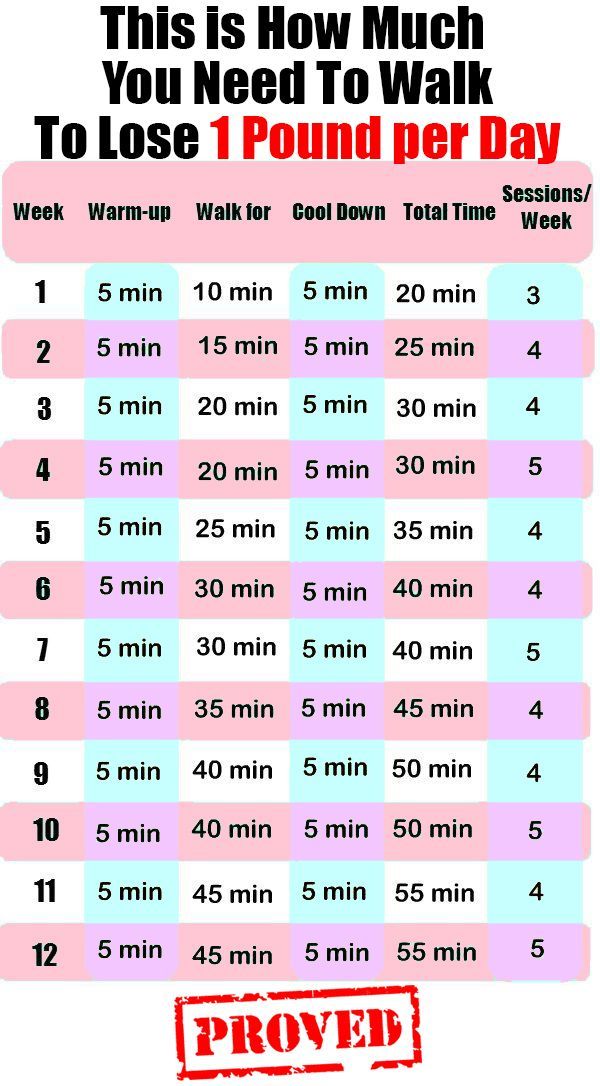
Similar to passenger car tires, truck tires also come in different sizes, depending on the type of truck. For trucks, you can categorize them into light-duty truck tires and commercial truck tires.

Besides passenger tires and truck tires, the tire market is also filled with various types of specialty tires. Such tires include RV tires, tractor tires, trailer tires, ATV tires, and farm equipment tires, among others.
Tires in this category weigh between 6 pounds to 250 pounds. Again, the weight will depend on the size of the tire, the type and application. For instance, a lawn more tire will weigh around 5.5 pounds while a tractor tire will come with a weight of approximately 253 pounds.
Farm tires and tractor tires weigh between 200 pounds to 400 pounds while ATV tires typically weigh approximately 35 pounds to 70 lbs. Most of the golf car tires on the market weigh around 10 pounds while a standard motorcycle tire will weigh around 30 lbs.
Monster truck tires are the heaviest in the market. These tires are specifically built for heavy-duty hauling and towing. Hence, they should be sturdy enough to handle extreme loads without blowing.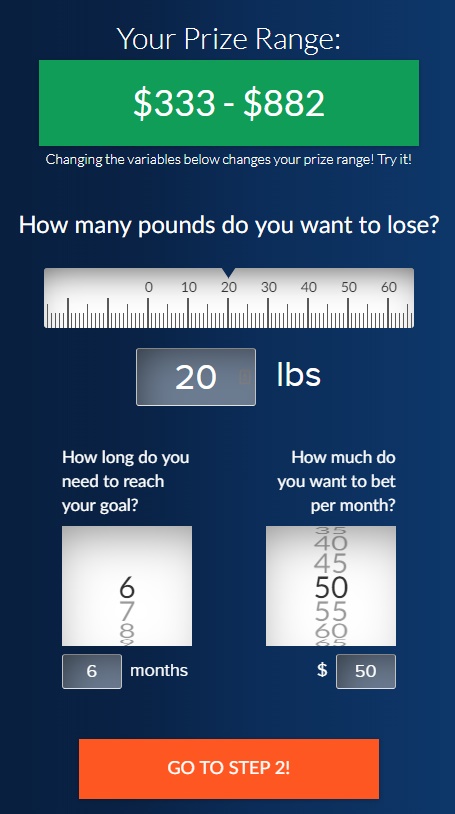
Most of the tires in this category measure approximately 43 inches wide and up to 66 inches high. Hence, you will have a tire that is approximately 4 feet wide and 6 feet high, thus the name.
So, how much do monster truck tires weigh? On average, these tires weigh around 800 pounds to 900 pounds. As you can see, there’s quite a significant difference in weight between these tires and ordinary truck tires.
A tire’s weight will depend on the tire you have on your vehicle. If you drive a passenger car, then the tires on your vehicle will be lighter than someone who drives a heavy-duty truck.
On the same note, if your vehicle has a set of mud terrain tires, they will be heavier than someone whose vehicle has performance tires, as much as the two tires may be of the same size.
On average, most of the tires on the market weigh between 20 pounds to 300 pounds. Specialty tires such as those used in monster trucks can weigh up to 900 pounds. But, their market share is considerably small.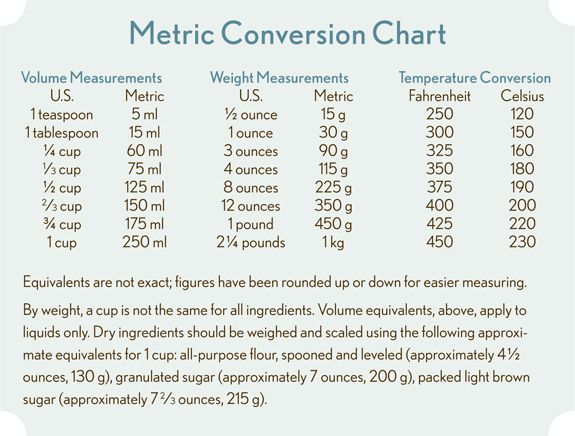
It’s not easy to change a tire, mainly because of the weight. Tires can be very heavy, but what is the average weight? How much do tires weigh, and what factors affect how heavy they are?
In this guide, we evaluate the different tire weights. We also talk about what affects the weight. While every tire might be slightly different, this article gives you a better idea of where the weight might fall.
The average passenger car tire weighs between 15 and 25 pounds. However, the tire’s weight depends a lot on the type and size. A smaller passenger tire might only weigh 15 pounds (6,8 kg), while a larger truck tire can weigh up to 80 pounds (36 kg) or more.
These weights are just for the tire alone, without factoring in the additional pounds that the rim adds.
Factors Affecting Tire Weight1. SizeThe biggest weight factor is the size of the tire.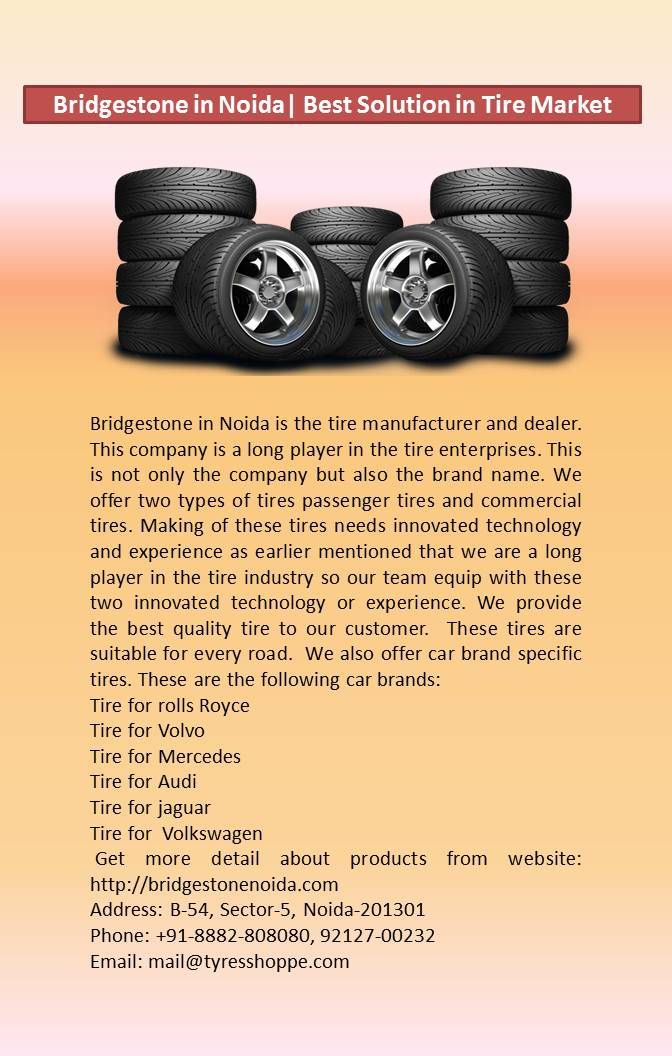 There are multiple facets of the tire size. First, you must look at the diameter. The diameter affects the volume, which translates to weight. It also shows how much material needs to be used, which makes it heavier.
There are multiple facets of the tire size. First, you must look at the diameter. The diameter affects the volume, which translates to weight. It also shows how much material needs to be used, which makes it heavier.
You must also compare the width of the tire. The wider the tire is, the more material is used and the more air pressure it holds, so the higher the weight is.
RELATED: How To Read Tire Size – Tire Sizes Explained
2. TypeThe tire type also affects its overall weight. The compact passenger tire is going to naturally weigh less than the large tire size.
It’s easy to see how tires stack up by weight when compared to one another. In most cases, the smaller the tire is, the less it should weigh.
3. ApplicationThe standard passenger tire comes with a belt system, casing and tread. All of these components will be found across the tire industry. However, certain tires meant for additional purposes can have other features that add to the weight.
As an example, the mud or all-terrain tire has chunky blocks in the tread, which is very different from the regular passenger tire. While these tires could be the same size, the all-terrain tires could be heavier in nature.
Additionally, the premium tire might weigh more overall. It can contain extra layers of rubber compared to the budget-minded tire. While the durability is higher, so is the price.
RELATED: How Much Does a Car Weigh? (Average Weight by Car Type)
Tire Weights by Type1. Passenger CarIt’s difficult to put all passenger car tires into one category because there are so many of them. This category can cover everything from 13- to 20-inches.
The majority of passenger car tires measures between 15 and 25 pounds. The smaller the tire is, the less you can expect it to weigh. It also depends on what level of performance the tire provides, with luxury or performance-focused tires having more material included, adding to the weight.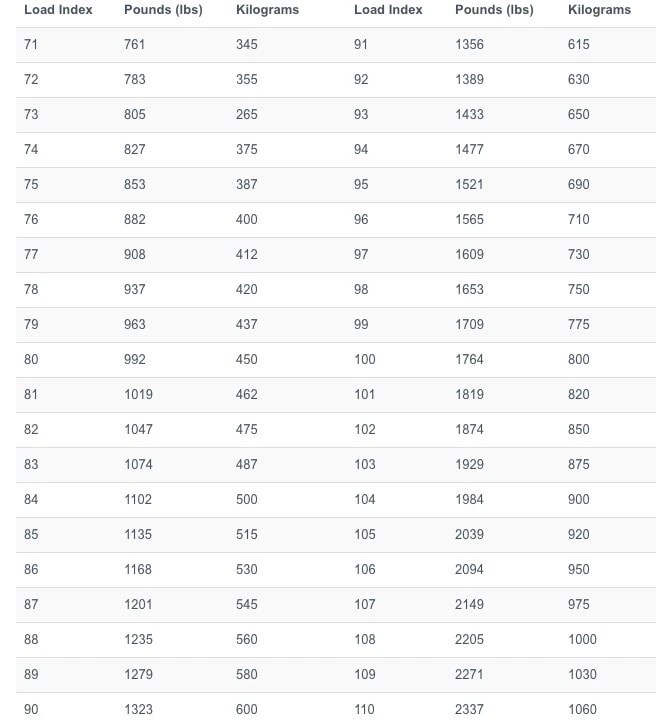
RELATED: How Much Does A Car Engine Weigh? (Small or Large Engines)
2. Truck/SUVThe truck or SUV tire is going to come in a variety of sizes, just like the passenger car tire. When it comes to the light-duty truck tire, it needs to provide support for regular hauling and towing. However, these same tires are used on comparable SUV models. That’s why most of the tires are between 17- and 24-inches.
On average, you can expect a truck or SUV tire to weigh 45 to 100 pounds, although there are some that weigh more or less.
3. Commercial TruckClearly, the commercial truck tire is going to be much heavier than the average pickup truck. They are larger and heavier than the average tire because of how much of a load is put on top of it. These tires must also provide the capability for hauling and towing.
On average, the commercial truck tire will weigh between 100 and 250 pounds. As with all the other types, there can be some that fall lighter or heavier in certain circumstances.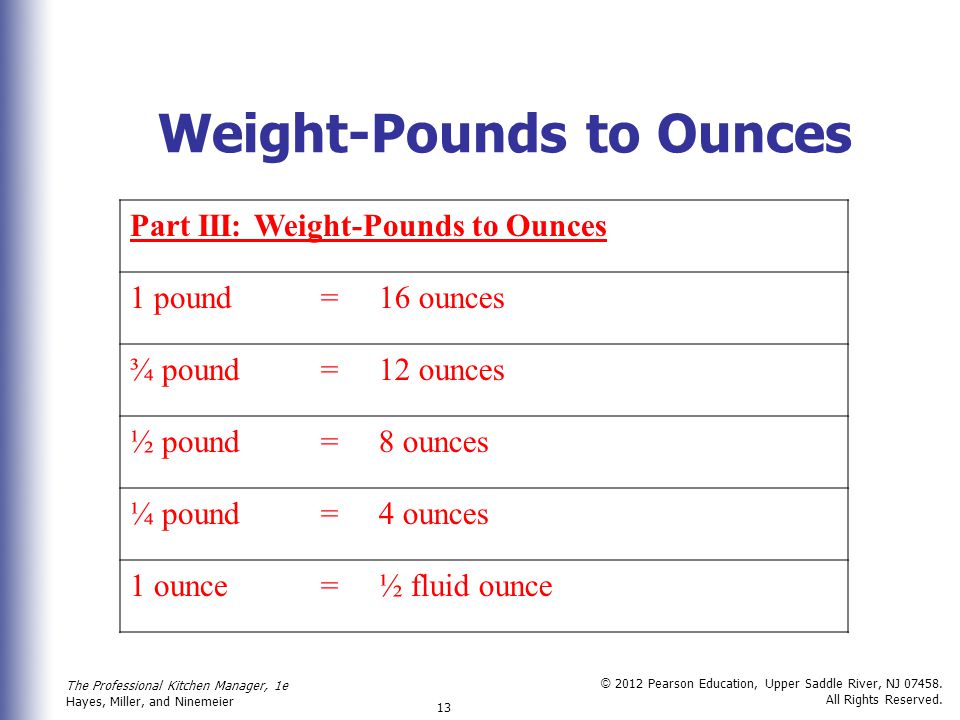
The monster trucks will be among the heaviest on the market. They are built with heavy-duty applications in mind. While they aren’t necessarily towing or hauling any loads, they need to be built, so the rubber doesn’t blow out.
The majority of monster truck tires measure up to 66 inches high and possibly to 43 inches wide. That means you get a tire that’s about 6 feet tall and 4 feet wide. It becomes clear why the tire is meant for monster trucks.
With a tire this big, you can only expect a massive amount of weight. Because these tires weigh between 600 and 900 pounds, it’s not easy to simply change them. It requires a lot of effort and the right equipment to get one of these tires off and a new one put on.
5. MotorcycleIf you think that a motorcycle tire is usually lighter than a passenger car tire, you would be right. It’s important for all motorcycles to keep the weight to a minimum, which is why lighter tires are used.
On average, the motorcycle tire might weigh between 8 and 30 pounds. Generally, the front tires usually weigh less than rear tires.
Unlike the car tires, where all four will likely weigh the same amount if they are the same brand, the two motorcycle tires can have different weights.
6. Golf CartThe golf cart tire helps you to traverse even smooth surfaces, such as what’s found on the golf course. For this reason, the tires don’t need to weigh a lot.
On average, you can expect golf car tires to weigh about 10 pounds. This could be a little more than what’s found on a lawnmower.
7. TrailerThe trailer tire needs to be able to hold whatever you are hauling. Depending on the size of the trailer, your tires could weigh around 10 pounds each.
Trailers can also hold a varying amount of tires. If the trailer contains two axles with dual-tire hubs, you would have a total of eight tires.
8. ATV
ATVAll-terrain vehicles have tires that can handle rough surfaces. For this reason, they are built to handle more obstacles and uneven terrain.
On average, the ATV tires will weigh between 20 and 40 pounds. The UTV will hold the same type of tires.
9. Farm/TractorThere is a wide variety of farm and tractor tires available, depending on what equipment you are using. These tires must be able to get across any type of surface, or the farmer might not be able to get to crops or accomplish the tough jobs that are ahead.
That’s why farm and tractor tires can have a variety of weight ratings. Some can weigh as low as 30 pounds, while others can weigh hundreds of pounds.
How much a big tire weighs depends entirely on how big the tire is. For example, large tractor tires can weigh 400 to 600 pounds each, which can give a total weight of all 4 tires of 2400 pounds. Large SUV tires for a car can weigh 100 pounds or more.
Large SUV tires for a car can weigh 100 pounds or more.
The best and most accurate way to figure out the weight of your tire is to either get the correct weight from the tire manufacturer or put it on a scale. If you find the product number on the tire, you can often find the weight information on the tire manufacturer’s website.
The weight difference between a tire filled with air or empty is only a few grams, so the difference is almost unmeasurable. Therefore, to find out how much a tire weighs with air, you need to find out how much it weighs without air.
The average rim weighs around 20 to 30 pounds, and the average tire is around 15 to 25 pounds. Therefore, you can expect a full wheel weight of 35 to 55 pounds. However, this depends on many factors such as rim material, tire size and much more.
You may ask how many psi for my carbon road wheels ? What is the appropriate tire pressure? The article contains information to help you get the recommended tire pressure.
Another thing is when you get the recommended tire pressure between clincher wheel tires and clincher wheel tires .
Standard tubed clincher tires.
The maximum pressure to use our tube mounted clincher wheels is 120 psi, however we believe the best performance is achieved below 110 psi for all riders. The recommended pressure for clincher tires is slightly higher than for tubeless tires to prevent pinching.
Tubeless
The maximum pressure to use our wheels with tubeless tires is 100 psi, however we believe the best performance is achieved below 100 psi for all riders. The recommended pressure is lower than the clincher to achieve the lowest rolling resistance, and it is clear that pressure flats are not a problem.
The table below shows our recommended tire pressures.
| STANDARD CLINCHER TIRE WITH INNER TUBE | TUBELESS TIRES | |
|---|---|---|
| ≤ 65 KG PIECE | 23 mm - 95/100 psi Inch 25 mm - 90/95 psi Inch 28 mm - 85/90 psi Inch | 23 mm - 90/95 psi Inch 25 mm - 85/90 psi Inch 28 mm - 80/85 psi Inch |
| 65 - 75 KG JACKER | 23 mm - 100/105 psi Inch 25 mm - 95/100 psi Inch 28 mm - 90/95 psi Inch | 23 mm - 90/95 psi Inch 25 mm - 85/90 psi Inch 28 mm - 85/90 psi Inch |
| 75 - 85 KG HEAD | 23 mm - 101/106 psi Inch 25 mm - 96/101 psi Inch 28 mm - 91/96 psi Inch | 23 mm - 95/98 psi Inch 25 mm - 90/95 psi Inch 28 mm - 85/90 psi Inch |
| 85 - 95 KG HEAD | 23 mm - 104/109 psi Inch 25 mm - 99/104 psi Inch 28 mm - 94/100 psi Inch | 23 mm - 95/99 psi Inch 25 mm - 90/95 psi Inch 28 mm - 88/95 psi Inch |
IMPORTANT INFORMATION - Please check and never exceed the maximum recommended tire pressure on the side of the tire.
If you already know your weight and tire size, you can get the recommended tire pressure. See the tire pressure chart to see how many psi( psi ) for your tire below.
A unit of measurement of weight: pound
The size of the tire0109 Ever since John Dunlop patented his experimental "pneumatic tire" in 1888, cyclists have been lining up to buy his miraculous invention. The tires were first glued on and then mounted on the rim. It took several years for the automotive industry to accept Dunlop's invention, by which time rubber tires had been extensively researched on bicycles. Larger wheels rolled better than small ones, and thicker tires provided better traction than thinner ones. The fat tires resisted the inevitable evil of punctures, but pedaling wasn't easy. All these contradictions had to be solved by tire companies. In the end, a number of compromises were found. Racers used thin tires with smooth tread and flexible sidewalls, inflated to high pressure, expressed in pounds per square inch (psi). Manufacturers have printed an extremely wide range of minimum and maximum tire pressures on the tire sidewalls - information that was useless to the individual cyclist, but now the old myths have been debunked over the past fifteen years as the MTB industry has closely examined the pressure the individual cyclist requires for the desired combination of stability on road, speed and comfort. The first legend to be destroyed was that thin, high-pressure tires meant speed. Scientific experiments have shown that a rider weighing, say, 155 pounds using 28mm tires at 60 psi will completely outperform his old-fashioned opponent from the 1980s who lost at 120 psi in 20 mm hard surfaces. Tire with lower pressure and larger cross section for superior comfort, road holding, speed and puncture resistance. But what is a hobbyist to do if he or she wants to find the optimum pressure for a particular tire? There are many easy-to-use applications for calculating tire pressure on the Internet. Enter your exact weight, the diameter of the tire you are using, then press CALCULATION . You can calculate your bicycle tire pressure here. A petite lady weighing about 110 pounds will be told to use fatbike tires at just under 20 psi. And the 200-pound bruiser will get a 130-psi recommendation for its 23mm road tires. Please note that these numbers require fine tuning. Use this approximate psi value as a starting point and experiment using more or less 5 psi until the process produces the desired pressure. Tire Stiffness is the dynamic-mechanical properties of pneumatic tires that are clearly defined by a set of measurement standards and test conditions adopted by tire and vehicle manufacturers around the world. These benchmarks include parameters such as radial and lateral force spread, taper, tire slip angle, radial and lateral runout, and sidewall bulges. Tire manufacturers around the world use this test to identify bad tires so they don't hit the market. Both tire manufacturers and vehicle manufacturers are striving to improve tire uniformity for a more comfortable ride. The circumference of a tire can be considered as a set of very small elastic elements whose stiffness varies depending on the production conditions. Fluctuation in spring rate in both radial and transverse directions causes scatter in both compression and recovery forces during tire rotation. On an ideal tire on a perfectly smooth path, the force distributed between the car and the tire will be constant. However, a standard assembled tire running on a perfectly flat road will exert a variable force on the vehicle that repeats each rotation of the tire. This vibration is the source of various driving damage. Manufacturers of both tires and cars are striving to reduce the amount of such damage in order to improve the dynamic performance of the vehicle. Measuring Axes The tire force oscillation axes are divided into three axes: radial, transverse, and tangential (or longitudinal). The radial axis runs from the center of the tire to the tread, or is it the vertical axis from the roadway through the center of the tire to the vehicle. Radial force fluctuation Since the radial force acts upward and supports the vehicle, the radial force fluctuation describes the change in this force as the tire rotates on the road. As long as the tire is rotating and elastic elements with different spring rates are touching and breaking away from the surface, the force will change. Imagine a tire holding a load of 1000 pounds (≈454 kg) and going on a perfectly flat track. That is, the force will typically vary up and down from this value. Hesitation between 995 and 1003 pounds would be characterized as an 8 pound radial force fluctuation (RFV). RFV can be expressed as a peak-to-peak value, the maximum value minus the minimum, or any harmonic value described below. Harmonic analysis RMS harmonic waveform analysis, like other force fluctuation measurements, can be represented as a complex waveform. RF2H expresses the amplitude of the radial force that pulses twice per revolution, etc. Often these harmonics have known causes and can be used to diagnose manufacturing problems. For example, a tire mold fixed with 8 bolts can thermally deform and cause eighth harmonics, so the presence of a high RF8H may indicate a mold fixing problem. RF1H is the leading cause of traffic disturbances, followed by RF2H. Higher harmonics are less problematic because tire rotation at line speeds time the harmonic value to create damage at such high frequencies that they are damped or overcome by other vehicle dynamic conditions. Shear force fluctuation Since the shear force acts from side to side along the axle on which the tire is mounted, the shear force fluctuation characterizes the change in this force as the tire rotates under load. During rotation, the tire can exert approximately 25 lbs (≈11.3 kg) of lateral pressure, causing the handlebars to pull in one direction. The oscillation between 22 and 26 pounds can be described as a shear force oscillation or LFV. LFV can be expressed as a peak-to-peak value, the maximum value minus the minimum, or any harmonic value described below. The lateral force is significant, for example, fixed to the car, the lateral force can be positive, moving the car to the left, or negative, moving it to the right. Shear force fluctuation Since shear force acts in the direction of travel, shear force fluctuation characterizes the change in this force as the tire rotates under load. As the tire rotates and elastic elements with different spring rates touch and break away from the surface, the tangential force will change. At steady state, the force may typically vary up and down from this value. This fluctuation can be characterized as TFV. Under test conditions at constant speeds, the TFV can detect itself through a slight speed instability occurring with each revolution due to changes in wheel rolling radius. TFV is not measured during production testing. Taper Taper is a parameter based on shear force behavior. This is a characteristic that describes the tendency of a tire to spin like a cone. This tendency affects the steering efficiency of the vehicle. In order to determine Taper, shear force is measured in two directions - clockwise (LFCW) and counterclockwise (LFCCW). The taper is calculated as half the difference between these two values, taking into account that the clockwise and counterclockwise values have opposite signs. It is for this purpose that tire manufacturers measure conicity and sort into groups depending on the results. Slip angle (wheels) Slip angle is a parameter based on the behavior of the lateral force. This is a characteristic commonly described as the tire's tendency to "crawl like a crab", or move from side to side while maintaining a straight line. This trend affects the steering characteristics of the car. in order to determine the Plastier, it is necessary to measure the shear force in both directions - clockwise (LFCW) and counterclockwise (LFCCW). The slip angle is calculated as half the sum of these values, taking into account that the clockwise and counterclockwise values have opposite signs. Radial runout Radial runout (RRO) describes the deviation of the roundness of a tire from a perfect circle. RRO can be expressed as a peak-to-peak value, just like harmonic values. RRO communicates motion to the vehicle, which is somewhat similar to radial force fluctuation. RRO is often measured closer to the tire's centerline, while some tire manufacturers are able to measure RRO from three positions: left shoulder, center, right shoulder. Lateral runout Lateral runout (LRO) describes the deviation of the tire sidewall from an ideal plane. LRO can be expressed as a peak-to-peak value, or as a harmonic value. The LRO communicates motion to the vehicle, which is somewhat similar to a lateral force fluctuation. LRO is often measured at the top of the sidewall, closer to the tread shoulder. Bulge and dimple Given that a tire is a complex of multiple components vulcanized in a mold, there are many variations in process parameters that can classify tires as defective. Both cases are considered visual defects. In production, tires are measured to identify tires with excessive visual defects. Bulges can also indicate incorrect assembly conditions, such as a missing cord, which carries a risk of injury. Therefore, tire manufacturers set strict standards for checking tires for bulges. The bulge and depression along the sidewall are also called thickening, gouge and lumpy sidewall. Tire force measurement machines Power heterogeneity machines - specialized equipment that automatically examines tires for tire uniformity parameters described above. They consist of several subsystems including tire transport, chucking, measuring rims, bead lubrication, air inflation, load drum, spindle drive, force and geometry measurement. First, the tire is centered, then its beads are lubricated for a softer fit on the measuring rims. The tire is indexed on the test node and mounted on the lower chuck. The top chuck is lowered until it contacts the top bead. The tire is inflated to the set pressure. The load drum extends up to the tire and applies the load force. Spindle drive accelerates tire to test speed. Once the speed, force and pressure have stabilized, the load cells measure the force exerted by the tire on the load drum. The force signal is processed in analog circuits, then analyzed and outputs the measurement parameters. Depending on different standards, tires are marked with the following marks: the angle of the upper deviation of the radial force fluctuation, the side of the positive taper and the taper value. Other machine types There are numerous varieties and innovations among several machine tool manufacturers for power uneven tires. The standard test speed supplied by a standard load drum for these machines is 60 rpm, which is approximately 5 miles per hour (8. Geometry Measuring System The tire force tester can also measure radial and transverse runout, taper and convexity. Several generations of metering technologies are used for this. These include: contact needle, capacitive sensors, fixed point laser sensors, wide grip laser systems. Capacitive sensors Capacitive sensors create a dielectric field between the busbar and the sensor. As the distance between the sensor and the bus bar changes, the voltage and/or current properties of the dielectric field change. Analog circuits are used to measure field changes and record the beat waveform. Compared to contact needles, the gripping area of capacitive sensors is approximately 10 mm wider. The capacitive sensor method is one of the earliest technologies and is well established; however, the sensor must be positioned very close to the tire surface, so collisions between tire and sensor can result in long term repairs. In addition, some sensors are very sensitive to humidity, resulting in incorrect readings. The 10mm surface grip also means that the camber measurement is limited to a small area of the tire. Capacitive sensors use void filtering to avoid the influence of cavities between tread blocks when measuring radial runout, and character filtering to avoid the influence of raised letters and patterns on the sidewall. Fixed Point Laser Probes Fixed Point Laser Probes have been developed as an alternative to the two previous methods. Lasers combine a narrow capture path with a long distance to the bus. In order to cover a wider area, mechanical positioning systems have been introduced to read different areas on the sidewall. Wide-field laser systems Wide-field laser systems were introduced in 2003 and have proven to be the most sensitive and reliable methods for measuring runout, convexity and trough. These sensors project a spectral line instead of a point, thereby covering a larger area. The sidewall sensors can freely measure the entire area from the bead to the shoulder of the tread and examine the entire sidewall for hernia or trough defects. Wide radial gauges can measure 300mm or more, covering the entire tread width. This allows you to characterize the RRO on multiple tracks. The wide coverage sensors function at a sufficiently large distance to avoid collision with the tire. The applied two-dimensional filtering of the tread cavities and the filtering of letters on the sidewall allow these characteristics to be excluded from runout measurements.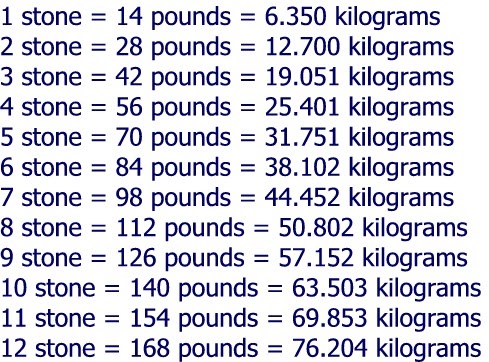 Butcher Boy needed fat tires for puncture protection at lower pressures and long life when carrying heavy loads. The postman's bike was somewhere in between the two extremes. And a number of myths have arisen based on tire pressure.
Butcher Boy needed fat tires for puncture protection at lower pressures and long life when carrying heavy loads. The postman's bike was somewhere in between the two extremes. And a number of myths have arisen based on tire pressure. 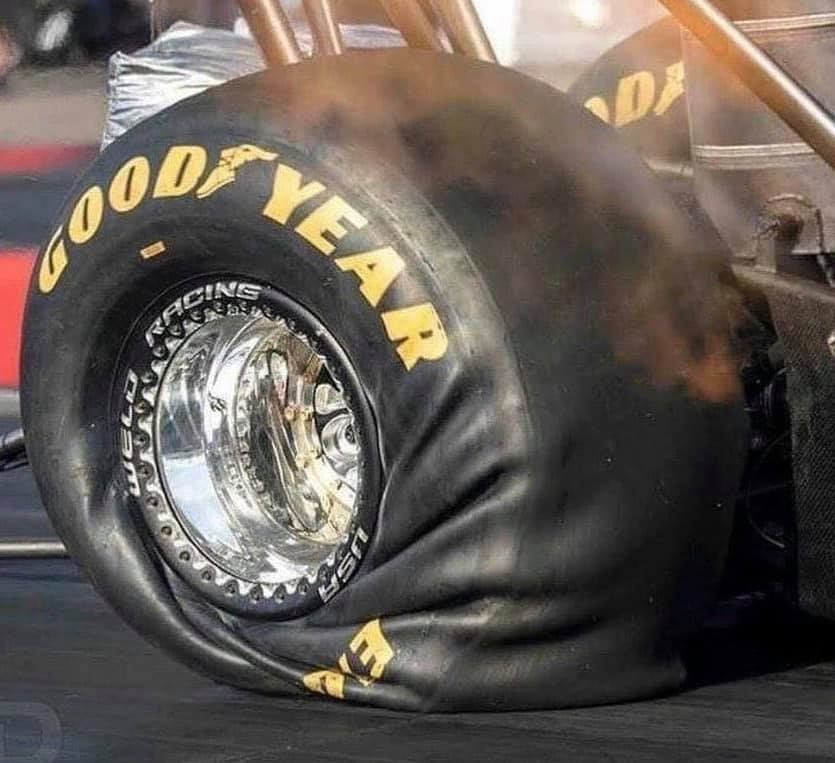 These days, professional road builders ride tires, sometimes even 30mm wide, that are suitable for the surface they will be racing on. And they do so under pressure determined by their own weight—or the weight of the bike and rider combined.
These days, professional road builders ride tires, sometimes even 30mm wide, that are suitable for the surface they will be racing on. And they do so under pressure determined by their own weight—or the weight of the bike and rider combined.  This fine-tuning process will need to be increased another 1.5 psi from the bottom end if you are using tubeless. And hookless tubeless tires are worth a try at pressures up to 5 psi less than what applications expect.
This fine-tuning process will need to be increased another 1.5 psi from the bottom end if you are using tubeless. And hookless tubeless tires are worth a try at pressures up to 5 psi less than what applications expect.
Tire Stiffness Causes of force fluctuation
 These elastic elements are compressed when interacting with the road surface and return to their original position.
These elastic elements are compressed when interacting with the road surface and return to their original position. Force Variation Parameters
 This axle supports the weight of the vehicle. The transverse axis departs in different directions from the tread. It runs parallel to the axis on which the tire is fixed. The tangent axis is the one in which the tire goes.
This axle supports the weight of the vehicle. The transverse axis departs in different directions from the tread. It runs parallel to the axis on which the tire is fixed. The tangent axis is the one in which the tire goes. This shape can be expressed according to its harmonic by applying the Fourier Transform (FT). The PF allows you to parameterize various aspects of the tire's dynamic properties. The first harmonic, expressed as RF1H (radial force first harmonic), describes the amplitude of the force oscillation that sends a pulse to the vehicle once per rotation.
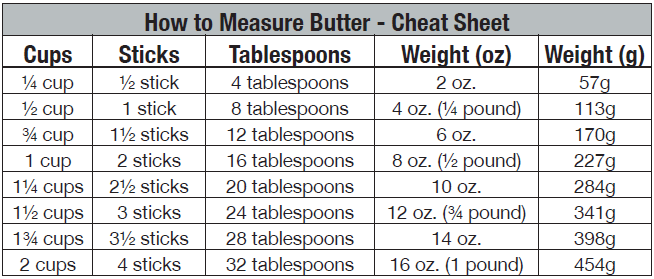 As long as the tire is rotating and elastic elements with different spring rates are touching and breaking away from the surface, the lateral force will change.
As long as the tire is rotating and elastic elements with different spring rates are touching and breaking away from the surface, the lateral force will change. 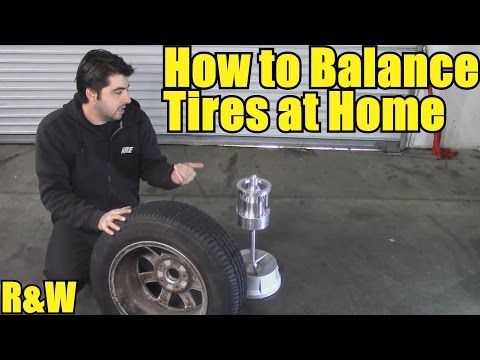 During rotation, the tire exerts a high traction force to accelerate the vehicle and keep its RPM at a constant speed.
During rotation, the tire exerts a high traction force to accelerate the vehicle and keep its RPM at a constant speed.  Taper is an important parameter for production testing. In many high-end passenger cars, tires with equal taper are mounted on the left and right sides of the car, with the understanding that these taper rates will cancel each other out and provide a smoother ride with little spin effect.
Taper is an important parameter for production testing. In many high-end passenger cars, tires with equal taper are mounted on the left and right sides of the car, with the understanding that these taper rates will cancel each other out and provide a smoother ride with little spin effect.  On production tests, this angle is not calculated.
On production tests, this angle is not calculated.  Bulges and depressions along the sidewall are such defects. A bulge is an underpressure on the sidewall that increases when inflated. A depression is an overpressure that does not expand to the same extent as the adjacent zone.
Bulges and depressions along the sidewall are such defects. A bulge is an underpressure on the sidewall that increases when inflated. A depression is an overpressure that does not expand to the same extent as the adjacent zone. 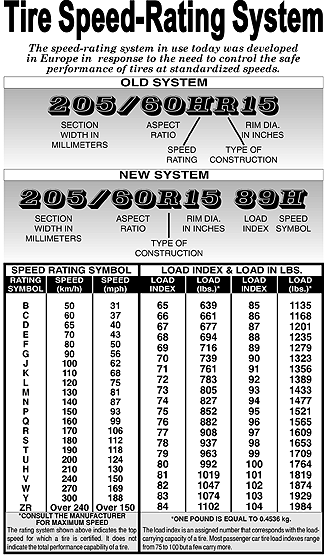
 05 km/h). High-speed machine tools are used in the research and development field, where the speed can reach 260 km/h or more. Such machines were also introduced in production tests. Along with this, machines are used that combine the measurement of force fluctuations and dynamic balance.
05 km/h). High-speed machine tools are used in the research and development field, where the speed can reach 260 km/h or more. Such machines were also introduced in production tests. Along with this, machines are used that combine the measurement of force fluctuations and dynamic balance. 
 Fixed point laser sensors use void filtering to avoid the influence of cavities between tread blocks when measuring radial runout, and character filtering to avoid the influence of raised letters and sidewall patterns.
Fixed point laser sensors use void filtering to avoid the influence of cavities between tread blocks when measuring radial runout, and character filtering to avoid the influence of raised letters and sidewall patterns. 